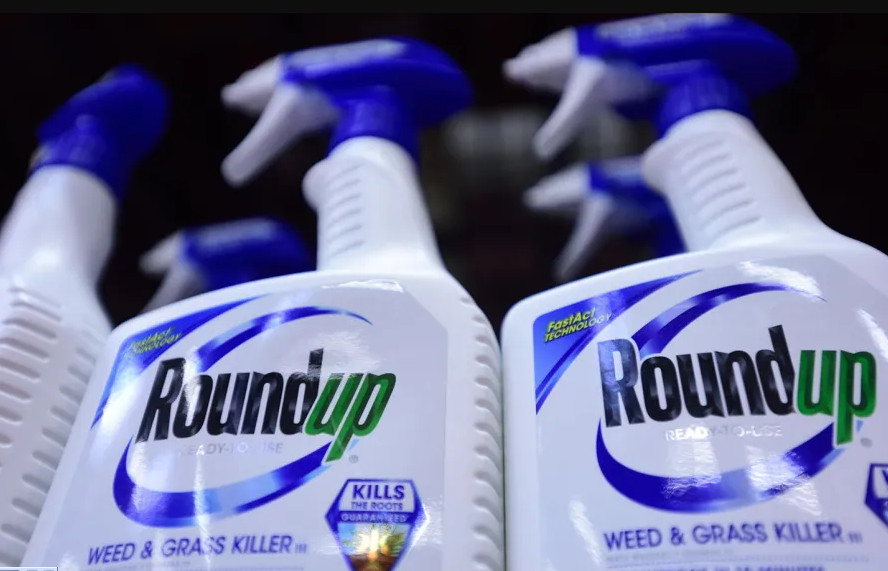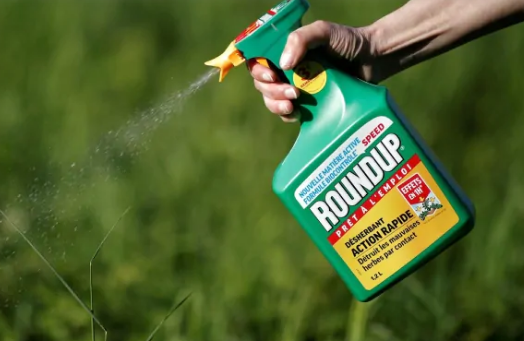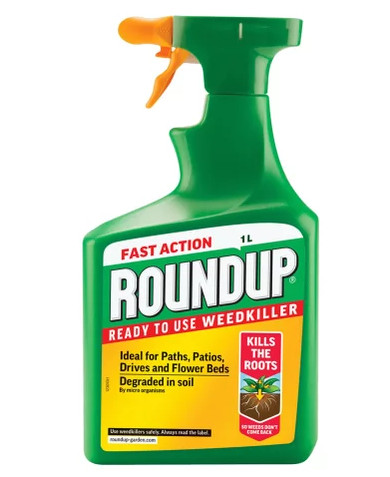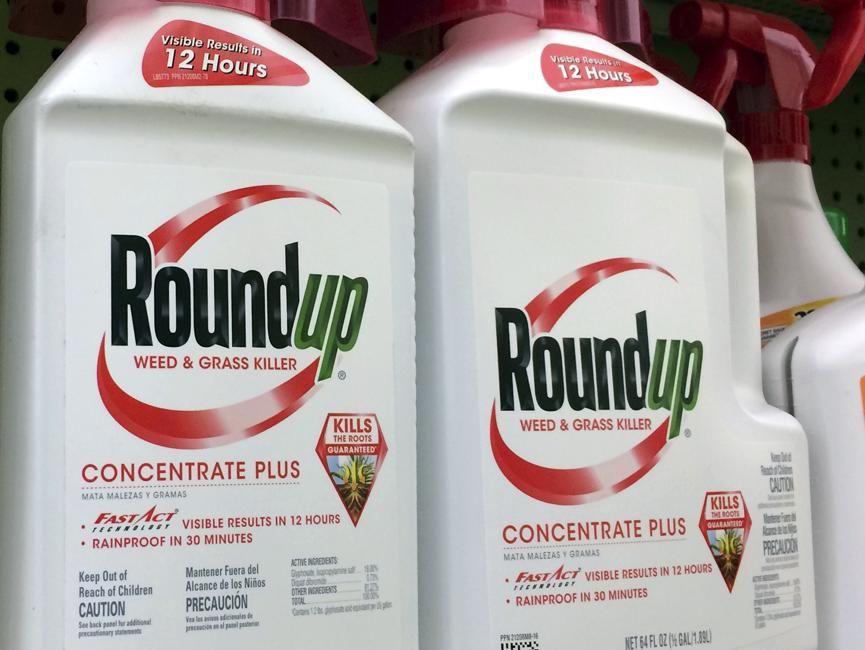For three years Dewayne “Lee” Johnson began his workday at 5 am, spraying herbicides on the edges of school parking lots and sports fields in advance of students’ arrival. Even after he was first diagnosed with cancer in August 2014, according to his testimony in court, Johnson kept on spraying. He’d been told that Roundup, the weed killer he used, was virtually harmless. In fact, the person who certified him as an integrated pest manager assured him that Roundup “is safe enough to drink.”
Last week a San Francisco jury contradicted that claim by unanimously awarding Johnson $289 million in a cancer lawsuit filed against Roundup maker Monsanto. Johnson, 46, is the first of more than 4,000 plaintiffs facing off against the agrochemical giant on charges that the company’s product causes non-Hodgkin lymphoma, a common cancer that will likely kill nearly 20,000 people in the United States this year, according to the American Cancer Society.
The landmark ruling in Johnson’s case is the latest development in a decades-long scientific debate about the safety of the herbicide, which is applied to crops, lawns, golf courses, and gardens around the world. Since Roundup was released in 1974, Americans have sprayed more than 1.8 million tons of its main ingredient, glyphosate; worldwide, the figure stands at 9.4 million tons. Glyphosate is now so ubiquitous in the environment that residue has been reported in many popular foods, from cherries to cereal.
Johnson’s attorneys say the verdict is a “game changer” that could lead to similar victories for other plaintiffs. “Monsanto has taken a very hard line that these cases lack merit, and that there’s absolutely no evidence that Roundup causes cancer,” said Johnson’s lawyer Brent Wisner, with the California firm Baum Hedlund Aristei Goldman. “Now they have a $289 million verdict that says otherwise, and not only that—that Monsanto acted with malice in its conduct.”
Monsanto maintains that Roundup is safe, and cites “more then 800 scientific studies and reviews,” including from the Environmental Protection Agency and the National Institutes of Health, showing no link to cancer. Company Vice President Scott Partridge said in a statement that Monsanto will appeal the decision and continue to vigorously defend Roundup, “which has a 40-year history of safe use and continues to be a vital, effective, and safe tool for farmers and others.” Monsanto Media Communications Manager Charla Marie Lord added, “This was an initial verdict. There has been no settlement with Mr. Johnson.”
Johnson used the industrial-strength Roundup product Ranger Pro when he was working for the Benicia Unified School District, about a half hour southeast of Napa, from 2012 to 2015. He testified that twice during the course of his job he was drenched with the chemical. The first time, in 2012, he was working at an elementary school when the hose to his sprayer got caught in a sidewalk crack and disconnected, “shooting fluid everywhere,” Johnson said, “like an open wound.” In the course of his trying to stop the flow, Ranger Pro soaked the inside of his Tyvek suit and his clothes. Johnson said he stripped out of the contaminated clothing, washed up, and kept working for another six hours.
In spring 2014, Johnson said he started to develop what he initially thought were “man scars”—everyday rashes and scratches that come with hard work. But when he developed a mysterious lesion on his inner right thigh he feared something worse and went to a doctor, who referred him to a dermatology specialist. A few months later in August he was diagnosed with skin cancer.
Worried that the cancer might be connected to his heavy exposure to Ranger Pro Johnson called Monsanto in November. An e-mail presented as evidence in his case detailed communication between company product specialist Patricia Biehl and her colleague, a toxicologist named Daniel Goldstein. “I spoke to Dewayne Johnson and he told me he works for a school district in California and nine months ago he had a hose break on a large tank sprayer,” Biehl wrote. She continued:
This resulted in him being soaked to the skin on his face, neck, and head with Ranger Pro. He said he was wearing a white exposure suit and it even went inside that. A few months after this incident he noticed a rash on his knee and then on his face and later on the side of his head. His entire body is covered in this now and doctors are saying it is skin cancer. He is just trying to find out if it could be related to such a large exposure to Ranger Pro since he stated his skin was always perfect until this happened. He is looking for answers.
In his reply, Goldstein typed, “I will call him. This story is not making any sense to me at all.”
Goldstein never did return the call, charged Johnson, and in the transcript of Goldstein’s deposition, he confirmed that he didn’t recall doing so.
Despite his concerns about the cancer lesions on his skin, Johnson kept working for the school district. Then, in January 2015, he had another accident: A backpack sprayer containing Ranger Pro leaked and again penetrated through his Tyvek suit, wetting his back. “I just panicked,” said Johnson, who by then had been diagnosed with non-Hodgkin lymphoma. “I’m like, I’m already scarred, I’m already uncontrollably having this stuff all over my body. I don’t know what’s going on and I did it again.”
Two months later, as Johnson was undergoing cancer treatments, the World Health Organization’s International Agency for Research on Cancer (IARC) released a report stating that Roundup’s primary ingredient, glyphosate, should be categorized as a probable human carcinogen, alongside DDT and the insecticide malathion. The announcement ignited a firestorm of lawsuits, including Johnson’s, claiming Roundup causes cancer. Some countries and the state of California moved to either ban glyphosate products or label them as containing a chemical known to cause cancer. (Monsanto is still fighting California’s decision to require a cancer-warning label, said Lord.)
More than 4,000 other Roundup cancer suits are working their way through state courts, largely in Saint Louis, Missouri, but also in other states, including Arizona, Montana, Delaware, California, and Nebraska. In March, an additional 450 plaintiffs in a federal lawsuit centralized in San Francisco cleared a major hurdle when presiding Judge Vince Chhabria ruled that there is enough evidence to indicate that glyphosate “generally” causes cancer. That ruling allows individual plaintiffs’ testimony to be presented before a jury trial, which hasn’t been scheduled yet.
In the course of the litigation, millions of pages of Monsanto corporate e-mails, memos, and scientific studies have been made public. Johnson’s attorneys drew upon many of those documents to make the case that at the same time his cancer was getting worse, the company was working behind the scenes to manipulate scientific research—ghostwriting articles, influencing regulatory agencies, and planning attacks on scientists’ credibility—to prevent official rulings declaring glyphosate carcinogenic.
“During the time Johnson was spraying, his cancer went from relatively controllable to a death sentence,” Wisner told The Nation. “All they had to do was just pick up the phone and call him.”
Jurors were not required to determine whether Roundup causes cancer. The question was whether it produces harm, and if Monsanto knew about that and yet failed to warn consumers. The jury was charged with answering several key questions, including: Was Ranger Pro a substantial factor in causing harm to Mr. Johnson? Did Ranger Pro have potential risks that were known or knowable in light of the scientific knowledge that was generally accepted in the scientific community at the time of its manufacture, distribution, or sale? Did Monsanto fail to warn of the potential risks? Was the lack of sufficient warnings a substantial factor in causing harm to Mr. Johnson?
The jury’s verdict awarding Johnson $39.2 million in compensatory damages and $250 million in punitive damages may bode well for future plaintiffs, Wisner said. “I think it’s pretty telling that we got a unanimous verdict in state court in San Francisco—in the same jury pool that the federal court will be drawing from. I think this verdict is powerful on a lot of levels.”
The next state trial is scheduled to begin in late October in Saint Louis, and a handful of others will likely be tried during the next year, Wisner said. The date for the first plaintiff case in the federal trial has not yet been set.
By the time the next trial begins, Monsanto will no longer exist—at least by name. When German drugmaker Bayer finalized its more than $60 billion acquisition of Monsanto in June, the company announced that it plans to retire the 117-year-old Monsanto brand. That step will eliminate the corporate symbol that for decades has been a lightning rod for environmental activists lobbying for better regulation of chemical pesticides. But very little else will change. Bayer will still sell the chemicals and engineered seeds that Monsanto made ubiquitous—and be left to pay what could amount to billions in legal settlements if future plaintiffs triumph.
Credit: www.thenation.com












